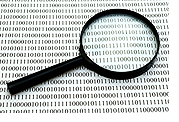|
||||||||||||||
Software,
Web 2.0 tools and data including images etc There are clearly thousands of resources available under the above heading,
so the links provided can only represent a small sample. However, they have
been chosen against a number of criteria. Firstly they are predominantly
free, and secondly they have some obvious or generally accepted relationship
with the topics in this site, either in terms of content or approach. Being
free may save a school or college money, but more importantly might make
it possible for out of school or college use by students or indeed staff.
There are clearly thousands of resources available under the above heading,
so the links provided can only represent a small sample. However, they have
been chosen against a number of criteria. Firstly they are predominantly
free, and secondly they have some obvious or generally accepted relationship
with the topics in this site, either in terms of content or approach. Being
free may save a school or college money, but more importantly might make
it possible for out of school or college use by students or indeed staff.
 Availability
of a generic set of “useful” software ranging from image processing
(to enable manipulation of say satellite images) to mind mapping to GIS
software (relatively specific) enables different tasks to be set and different
expectations to be made of students. This is well illustrated in the case
of the Google Earth link which demonstrably offers insights at the click
of a mouse which were hitherto unimaginable. However, today’s students
are “digital natives” and what is sometimes missed, but more
poignant, is that their expectations of staff, and the education system
as a whole are also raised. These expectations make this sub-section and
the free availability of the resources all the more important. Availability
of a generic set of “useful” software ranging from image processing
(to enable manipulation of say satellite images) to mind mapping to GIS
software (relatively specific) enables different tasks to be set and different
expectations to be made of students. This is well illustrated in the case
of the Google Earth link which demonstrably offers insights at the click
of a mouse which were hitherto unimaginable. However, today’s students
are “digital natives” and what is sometimes missed, but more
poignant, is that their expectations of staff, and the education system
as a whole are also raised. These expectations make this sub-section and
the free availability of the resources all the more important.  Thus
in terms of Web 2.0 tools, the anytime, anywhere, sharing and social networking
dimension is important firstly to exploit, but secondly to challenge. The
technology may exist to enable a student to produce e.g. a podcast, but
the teacher’s and students’ expectations must align with fitness
for purpose, efficiency and appropriateness. In other words we can be impressed
with what is now possible but should not be dazzled by it. Conversely, if
a student subscribes to bloglines in order to get up to date information
on e.g. global warming fed directly to them, or shares useful sites with
peers in a project group via del.icio.us, then that may illustrate fitness
for purpose, efficiency and appropriateness. Thus
in terms of Web 2.0 tools, the anytime, anywhere, sharing and social networking
dimension is important firstly to exploit, but secondly to challenge. The
technology may exist to enable a student to produce e.g. a podcast, but
the teacher’s and students’ expectations must align with fitness
for purpose, efficiency and appropriateness. In other words we can be impressed
with what is now possible but should not be dazzled by it. Conversely, if
a student subscribes to bloglines in order to get up to date information
on e.g. global warming fed directly to them, or shares useful sites with
peers in a project group via del.icio.us, then that may illustrate fitness
for purpose, efficiency and appropriateness. Our
uses and definitions of data have perhaps changed with the availability
of broadband since the previously large files associated with images, sound
and video are now quite practically shared and distributed. The same arguments
about expectations and about appropriate use also apply, and the issues
of intelligent use perhaps more so. Our
uses and definitions of data have perhaps changed with the availability
of broadband since the previously large files associated with images, sound
and video are now quite practically shared and distributed. The same arguments
about expectations and about appropriate use also apply, and the issues
of intelligent use perhaps more so.  Having an impressive image e.g. from a satellite showing contrails is soon
compromised when it is distorted to fit into a a crude frame in a presentation
or essay. Equally the relevance is dubious if the topic is focused on Jordan,
but the image shows most of the Middle East with little detail of Jordan.
In these contexts, it may be the case that the student is more adept with
the software to manipulate these, but the teacher role remains to advise
how to use the skills sensibly to best effect.
Having an impressive image e.g. from a satellite showing contrails is soon
compromised when it is distorted to fit into a a crude frame in a presentation
or essay. Equally the relevance is dubious if the topic is focused on Jordan,
but the image shows most of the Middle East with little detail of Jordan.
In these contexts, it may be the case that the student is more adept with
the software to manipulate these, but the teacher role remains to advise
how to use the skills sensibly to best effect.  The
availability of data including images, audio and video is not only useful
for the improved look and quality of presentation of student work, it should
also be exemplified in that of the teacher. The opportunity to start a lesson
with a video extract by a key speaker shown on a digital projector enables
the teacher to meet the expectations of the “digital native”
and can be efficient and appropriate e.g. the link to the Global Climate
Change lectures. Similarly, the link to the Worldmapper resources, sets
new standards for “representative diagrams”, and it would be
difficult to better choosing e.g. “World Population in 2050”
for dramatic effect and as an effective stimulus to some high quality thinking. The
availability of data including images, audio and video is not only useful
for the improved look and quality of presentation of student work, it should
also be exemplified in that of the teacher. The opportunity to start a lesson
with a video extract by a key speaker shown on a digital projector enables
the teacher to meet the expectations of the “digital native”
and can be efficient and appropriate e.g. the link to the Global Climate
Change lectures. Similarly, the link to the Worldmapper resources, sets
new standards for “representative diagrams”, and it would be
difficult to better choosing e.g. “World Population in 2050”
for dramatic effect and as an effective stimulus to some high quality thinking. |
Software Web 2.0 Tools Data etc |
|||||